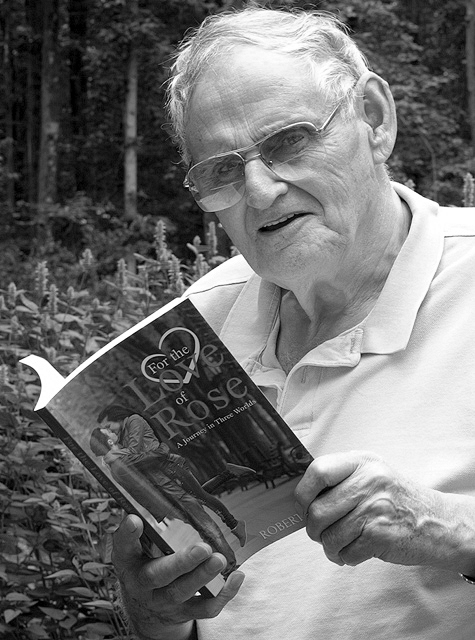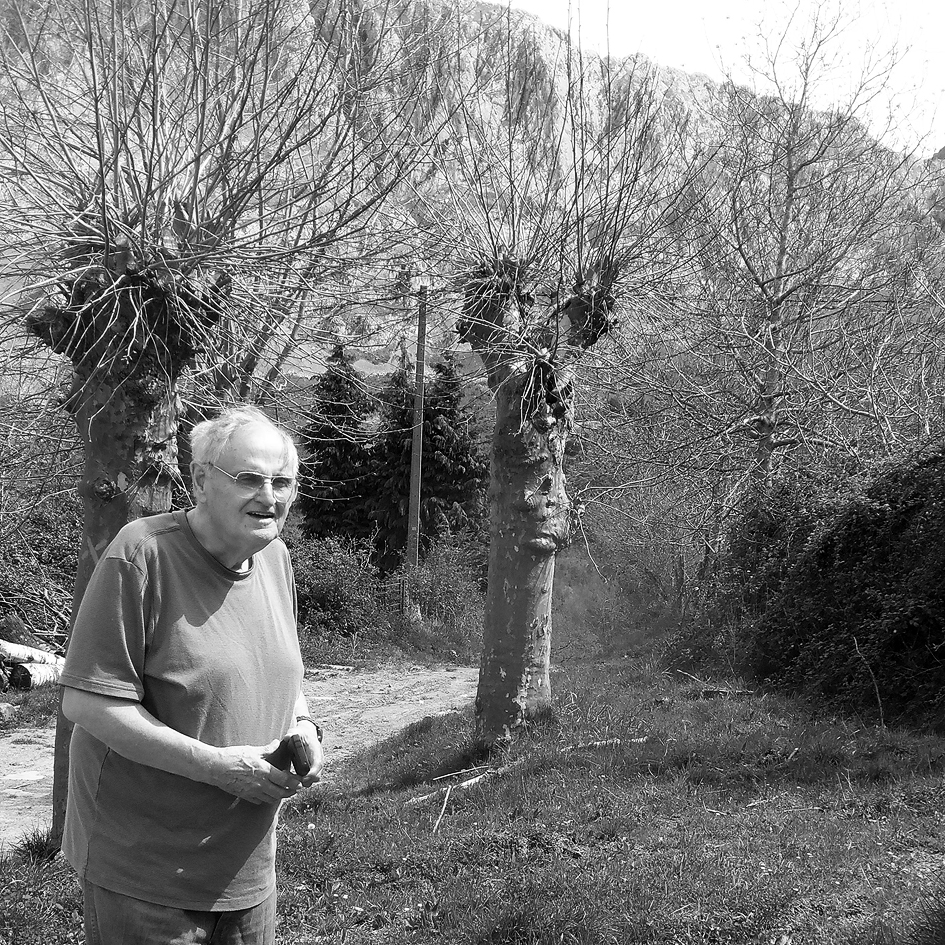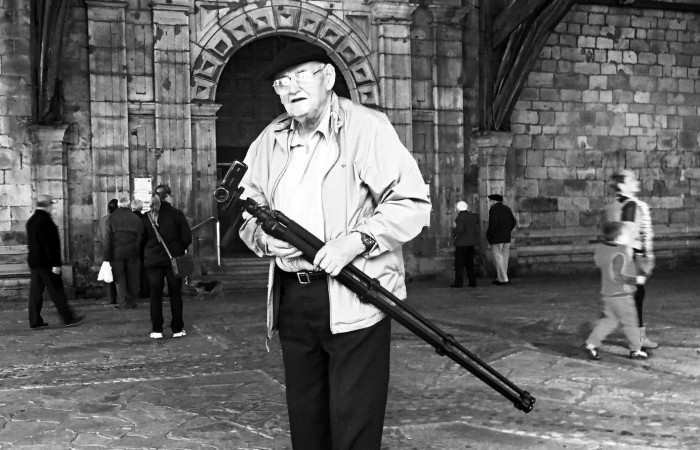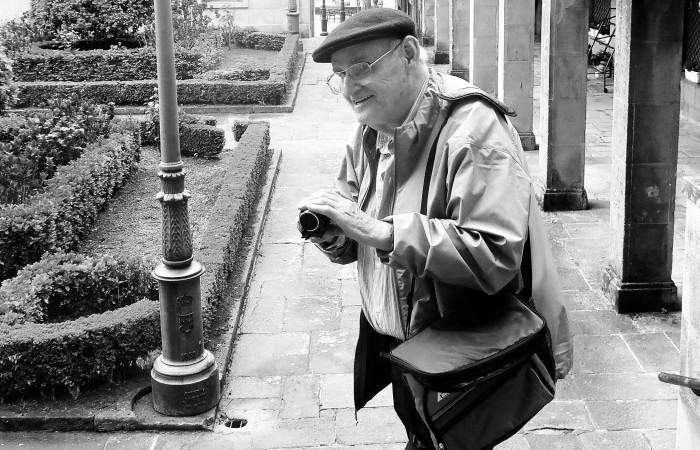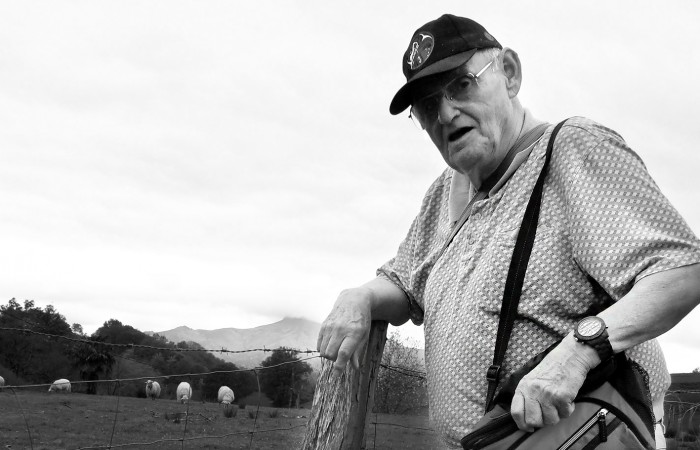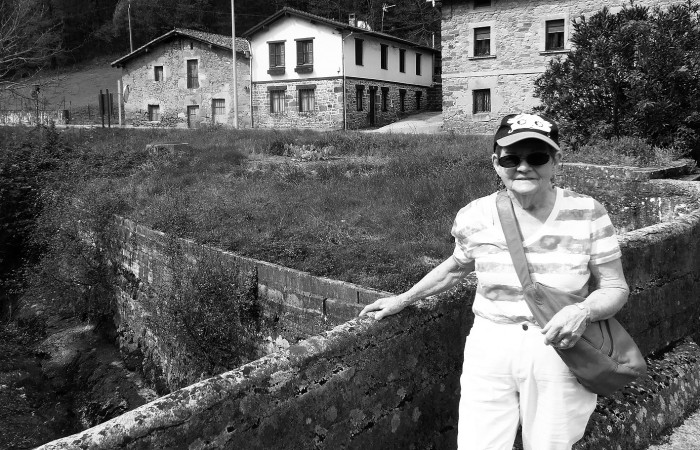«Gernika has been used in so many stories and movies that I needed somewhere else and Durango fitted the bill very well»
Iban Gorriti | Gabriel Gorriti | Xabi Lozano | Nerea Larrabide | Peter Ireton
Last year Robert Egby’s novel For the Love of Rose. A journey in three worlds was published. It is partially set in Durango and its surroundings during the Civil War. The writer and his partner, Betty Lou Kishler, visited Durango last April as part of their visit to the Basque Country, while preparing the documentation for the book. They wanted to see for themselves the places in which the action took place together with the information on the bombings of Durango which took place on 31st March 1937.
– When did the idea of including Durango, Elgeta and Urkiola in this book came to your mind?
First of all, I was writing a short story about two young lovers, Frank Barbury and Rose Gerrard meeting near a railway bridge in the very rural Northern New York State. Originally it was set in 1938 and would end when Frank went to war in Europe – that’s WWII. Trains are important in the storyline. Well, the local train service ended in March 1936 so I was forced to move the story to that year. Frank is the 17 year-old son of a “no guns, no killing” dairy farmer. Rose is 21 year old Long Island artist. I needed a war – so I found Spain.
This is where the short story took on a life of its own and became an 80,000 word novel. Rose is the daughter of a well known American surgeon Dr. Harrison Gerrard and Mrs. Frida Gerrard. Frida is from Northern Spain. The doctor met her while studying in Paris after WWI. Dr. Gerrard meets Edward Barsky, recruiter for the Abraham Lincoln Brigade (real person) and urges him to go to Spain. He goes, accompanied by Rose. They get lost. With absolutely no experience Frank sets out to find them. In the process he becomes a man.
-In your novel, what happens in Durango? Is it an important chapterof the story?
Rose and Frank accompanied by all the main characters – Dr. Gerrard, Miriam – Rose’s aunt, Pello, her radical thinking young adult son, Emma, a hard-shooting intelligence officer from with the Basque Forces along with Larks Eriksen, a young Danish journalist. They come early to pick up medical supplies. It’s market day – March 31st 1937. As the bombs fall, stunning explosions send walls and beams flying, Frank pulls Rose into a doorway opposite the market place and the Santa Maria di Uribarri Church. As debris and masonry fall, Frank attempts to protect Rose but her body is slumped below debris. As more bombs fall he picks up her body – he believes she’s dead – and starts walking through the sheer hell of the attack. You really have to read that part because there are several anecdotes, small stories such as the little girl they had met. It’s a tear-jerker, I’m afraid. It was not an easy scene, nor indeed an easy book to write.
-What aboutin Elgeta and Urkiola?
Elgeta – that’s where Frank started his work as an ambulance driver, driving the captured Phanomen Granit German ambulance. It was near Elgeta that I staged one of the terrible massacres I had learned about. It’s difficult to believe that there arepeople still searching for loved ones and friends murdered and buried in remote places.
– I’m aware that you came to Durango last April to know the places. What kind of documents did you check?
Before I came to Durango I had read at least 12 books by leading authorities and I list them in the back of the book. I think George Steer’s description of the bombing of Durango in “The Tree of Gernika” was the most forceful. I was impressed by the detailed work Gordon Thomas and Max Morgan Witts did in “The Day Guernica Died.” The tracked down survivors all over the world. I also watched hours of films on Youtube on the Spanish Civil War. In addition, I spent hours studying the entire region as it is today on Google Earth, so that when my partner, Betty Lou and I arrived in Spain we would have some idea of where things are.
The Durango Tourismo arranged for me to see archive photographs of the bombing which are very emotionally moving. I used a set of photographs at the back of the book.
You see, Iban, I like to set my stories and characters in real places in real times. Most of the people mentioned on the American side were real people – such as Edward Barsky, Luella Lucas, the local librarian were real in 1937. So were all the soda fountains, dance halls. That’s what I enjoy. Researching a place so it seems alive to the readers.
– Why were you interested in the Spanish Civil War?
I had no intention of getting involved in the Spanish Civil War. I feel as if I was guided – spiritually, to see, do and write what I did. I cannot understand why some 22 countries signed a non-intervention pact to not come to the assistance of the duly elected government. One method I use in the book is to have Frank’s younger brother, Jake Barbury develop as a political writer and while losing touch with Frank, he maintains a watch on all news out of Spain and writes articles slamming the countries for their non-intervention in Spain. I couldn’t have Frank talk about it, so that was Jake’s role on the home front.
– And why did you choose the bombings of Durango and not the aerial attack on Gernika, the latter more famous internationally?
Durango came almost a month ahead of Gernika and dear old Gernika has been used in so many stories and movies that I needed somewhere else and Durango fitted the bill very well. Another thing: I had Frank get to Elgeta in mid-March. I couldn’t have him standing around until late April for Gernika. Durango was right in all ways including timing.
– I know that ‘For the love of Rose’ begins in Florida, in September 2013, but there is a flashback thattakes us to the Spanish Civil War years?
The whole book is a flashback to the 1935-1940 period except for the opening chapter in September 2013 and the last couple of chapters.
– Was this your first time in Euskal Herria? What would you highlightof our country?
Well I read Mark Kurlanksy’s excellent book The Basque History of the World and came to understand Euskal Herria, in fact Betty Lou and I spent hours – days in fact – attempting to learn and speak Euskadi. It’s a unique language with deep origins and quite a challenge. Thus we study Spanish for an hour every night and hope that by next April we will be able to converse – we’ll see. If I can speak Spanish the way you write English, I’ll throw a party.
-Which were your feelings when youwalked along Kurutziaga Boulevard, because according to your novel, it was the most surprising place you visited?
Kurutziaga kalea? When we walked along the boulevard in April it was difficult to imagine that the atrocities carried out by the Condor Legion actually happened. I have a photograph in my book of the place after the bombing and when I took a photograph of basically the same spot, it was then that I felt the drama and killings that had taken place there. Everything has been rebuilt, and rebuilt very well – including the beautiful Jesuit Church. The strafing of the innocent people fleeing from the bombing was barbaric and totally inhuman. Unfortunately, it’s mens’ inhumanity to men, women and children. Barbaric – and it’s still happening today.
-Having worked as a war correspondent has influenced the writing of this book?
When I was an accredited British war correspondent in the Suez/Egyptian war of 1956 I was 24 years old. I did my job taking news photographs and reporting. I didn’t feel the emotional impact that I feel today. I don’t think reporters covering wars have time to think about the human and perhaps spiritual sides of war. It’s all politics and the rush to get the copy to the news desk as fast as possible. I think that as one grows older – I’m now 82 and Betty Lou is 80 – one becomes more philosophical, more sensitive. This may be a tough statement but I don’t think anyone learned anything about the Civil War in Spain. I have people who have read the book – Americans – saying “I never heard of that war. Did it really happen.” No one learns from history. That was one reason I wrote “For the Love of Rose,” and included photographs and references.
– Has the fact of witnessing so many wars and writing about political issues led you to a different lifestyle or to a spiritual lifestyle?
Yes, I’ve just answered that question.
– We would like to know more about your partner, Betty Lou Kishler. What can you tell us about her?
Betty Lou Kishler, a retired American school teacher and principal. She lost her husband 15 years ago. She’s a great agitator for womens’ rights especially when it comes to the Catholic Church. She believes women should play a major role in running the Church. All texts mentioning “man” should be re-written to read “man and woman.” If and when you meet her Iban, she could make a fine controversial interview. My wife died in 2003 and Betty Lou and I have been together for ten years. At our age, what’s the use of getting married?
– You have dedicated the book to those who died because of the war in Three Mile Bay (NY) and in Durango. Did you have the chance to meet their relatives?
No, we did not. I can well feel the hurt for people who lost loved ones in both places. Why do we feel this way? I feel it is because when a loved one dies, he or she leaves a space, a gap, and it takes time for that gap to heal. With some people the gap never heals. Perhaps one day we will have the honor of meeting a man or a woman who says “I lost a loved one that day in Durango.” Such people are now few and far between – it’s 77 years since that day, so such people are now well into their 80s. As Hemingway said: “There is no good reason for war”.
– Some historical pictures are included in your book, something unusual in novels. Why is this?
Most novels don’t have photographs, but this one deserved pictures to reinforce the historical aspects and the tragedy that happened. Maybe it will get some yoiung people to say: “I’m going to read up on that.” It’s strange but in many American schools they do not teach history such as the Spanish Civil War. They still talk about Washington, Lincoln etc.
-In your thank-you note, you mention the Durango Tourism Office and the Archive Department of Durango. Would you like to say anything to them?
Miriam and the Office of Tourism was great. They answered many questions and steered me to the right places. When I met the curator of the Photographic Archives, a kindly man who couldn’t speak English and we couldn’t speak Basque or Spanish, Miriam came over and helped us acquire a great set of memorable photos.
– It’s a joke, but… Do you feel more English or American?
I was born in England, worked in the Middle East (Cyprus, Egypt, Lebanon, Iraq, Aden) for 13 years, did a couple of years in Germany, then moved to Canada for 30 years editing newspapers and working on radio stations. Then moved to the United States in 1997. My autobiography is called “Kings, Killers and Kinks in the Cosmos: Treading Softly With Angels Among Minefields.” I have been a reporter, editor, news photographer, public relations officer, certified hypnotherapist, Spiritualist minister and counselor, dowser and author and publisher of ten books.
-What about a little bit Basque? (laughs)
Iban, if I didn’t have a sense of humor I would have expired in some back alley years ago. I say that if no one reads my books, I have enjoyed writing them – simply because all the characters live in my mind. When Rio, the Spaniard who guided Frank and the others through the Pyrenees gets killed near Elgeta, it broke my heart. I had to get him out of the story and the way he dies he makes a simple mistake – he thinks the Russian fighter aircraft are his friends and waves to them – forgetting he is standing in Nationalist held territory.
Etiquetas: Durango, Izurtza, Robert Egby, Urkiola








